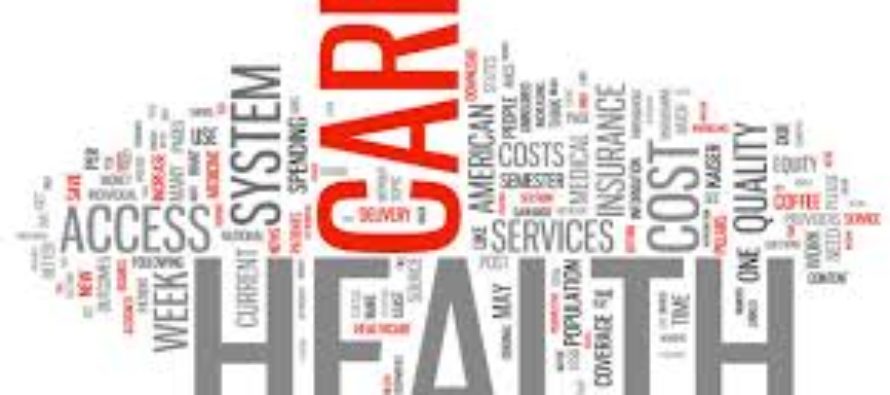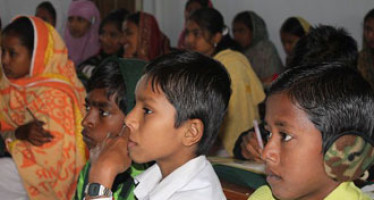Inequalities in China’s health care system and Financing mechanism

The People’s Republic of China (PRC) is the most populous country on earth with a population of more than 1.43 billion. Despite their birth rate and fertility rate going down significantly due to its one-child policy which was abandoned in 2015, China still has more human population than the second populous country India and the third populous country United States. It indicates that China has a massive task to maintain its health care system. Since the late 1970s, as a result of China’s planned market economy, China experienced rapid economic growth, its health care system witnessed the significant transformation and along with its economic policies, especially in the past decade.
China’s spending on its health care system is increasing rapidly as the human population growth continues, and the number of aging of the population grows. China’s annual health care spending is projected to increase by 11.8% annually, which reached $892 billion in 2018. It is expected to continue this trend, and China’s annual health care expenditure will be increased further as the consumer’s incomes are growing very quickly, and the reforms in the health care system. This policy analysis will analyse rural-urban differences in health resource and service utilisation and health financing mechanism in China’s health care system.
Rural-urban inequality in the health care system
China’s health care expenditure compare to the OECD countries is much lower; in 2013, China’s health care spending was 5.4% of the GDP. There is a demand gap in China’s health care system. This demand created due to rapid urbanisation, increasing consumer wealth, aging population, disease due to lifestyle choices and the advancement of universal health insurance. These elements are driving behind the massive expansion of the health care service market. It will not be possible to continue this expansion without significant investment by the government, and at the same time, it requires substantial encouragement from the Chinese government. As we know that China is a very large country in terms of landmass and its human population size, it has got unbalanced economic development across the country. Urban and rural residents are registered separately according to the household registration system called ‘hukou’, and the Chinese government financing system is different for these two categories. Despite having massive improvements in general living conditions due to the economic reforms, unfortunately, it generated various unintended consequences as well especially increasing number of the elderly population and their lack of health insurance affected the rural health care system. While urban health care system basically remains intact, which contributed to the urban-rural inequality in the Chinese health care system. This rural-urban inequalities in using health care system are more evident under ‘hukou’ system as urban adults are more like to use self-care, outpatient care and inpatient care compare to their rural counterparts. Despite the fact that rural citizens are underutilising the Chinese health care system compared to the urban residents, continuous reform in the Chinese health care system is indicating a positive effect to maintain the equitable distribution of the health care resources. In regards to this, policy-making bodies need to be aware of the challenges put forward by the increasing aging population and health care spending annual increment.
The significant urban-rural inequality in the Chinese health care system actually brings different outcomes for the adult and children. For example, infant mortality rates in the urban population two times less than the rural population and per capita expenditure on health care system in the rural area is one third lower than the urban expenditure. The unbalanced development in medical service supply in the urban and rural areas contributed to the lower utilisation of the health care services in the rural areas. In 1955, when the ‘hukou’ system introduced to control the internal migration, it favoured the urban population in many ways such as housing, ration stamps, getting employment opportunities, and subsidising various services. Since the late 1970s, due to the massive economic growth, a large number of the rural population moved to the urban areas without changing their hukou status. Even though the government eased the ‘hukou’ restrictions between the years 1993-2011, rural citizens in the urban environment still encounter in getting health care services and other public services. The social health care insurance still operated in two systems. For example, the rural population receive their health care services through a community health insurance scheme known as the New Cooperative Medical System (NCMS), whereas urban population receive their health care insurance through Urban Resident Medical Insurance (URBMI) and Employee Basic Medical Insurance (UEBMI). The rural insurance scheme NCMS has inferior health coverage compared to urban insurance schemes URBMI and UEBMI. For example, under the NCMS scheme, in 2008, the average hospitalisation cost 56% of per capita annual income. On the other hand, under the URBMI and UEBMI enrolees cost only 31.8% and 38.2% of per capita annual income. This higher expenses actually pushes the rural people away from inpatient care.
Financing mechanism
The resource allocation by China’s health care system is not equitable between rural and urban areas. In 2003, 45% of the urban human population was not covered by any health care insurance, whereas 79% of the rural population was not covered by any health care insurance. Despite having no health care insurance, the uninsured were charged the same for fees a given health issue regardless of their economic status. In addition, there is no price disparity based on income in the premium collected by the NCMS. Most of China’s health care system expenditures are allocated in the urban areas, whereas public funding is not sufficient to ensure the basic primary health care in rural areas. In addition, most of the migrants who come from rural areas are not included in the current health care insurance schemes such as URBMI and UEBMI.
How the Policy relates to Marxism
The health inequalities, as documented earlier products of China’s socialist market economy and its various approach. The complexity of the Chinese health care system indicates the class relations based on geographic locations, and as a result of it the conflict arises using the materialistic approach through the development of the Chines health care system. However, despite China’s two health care systems based on the geographic location, the government covers various medical costs in rural and urban areas under the NCMS, URBMI and UEBMI. It is only Marxism that has been able to identify the supply of the health care inequalities in Chinese society through the current system. The Chinese socialist market economy is exhausted in developing the productive basis of society. Therefore, the Chinese government’s expenditure to cover the health care cost and to reduce the inequalities through Marxist philosophy which is essentially a guide to action. Because contradictions in society can only be achieved by human working consciously striving for the transformation of society. In this instance, covering the health care cost and reducing the inequalities. This report finds it Chinese health care system is a great example of Marxism. However, this report acknowledges that the relationship between Marxism and the welfare state is very complex as the welfare state under various system very diverse.
Recommendations
This analysis acknowledges that the supply of the health care system gap between the urban and rural areas cannot be filled in the short term. However, Chinese government can introduce few steps to minimise the inequalities in their health care system.
a) The government can maintain the balance by introducing income-based health care system not based on geographic locations.
b) Better tax policies and transfer payments, especially for the rural areas.
c) The Chinese government can introduce fiscal policies in rural areas to reduce poverty. If poverty reduced in rural areas, human migration into the urban areas will be reduced too.
d) The Chinese government should introduce policy measures to provide coverage for any health problems regardless of the areas.
e) Combining the systems will reduce ambiguity. By doing these government can ensure providing basic health care in rural and urban areas.
f) The human migration from the rural agrarian-based society to urban service environments will pose significant stress on the existing urban health care providers. In order to reduce human migration into the urban areas, government should create more opportunities for employment in the rural areas.
g) In Chinese society, in order to maintain the social values to develop an equitable, sustainable, efficient and fair health care system in the coming years, the government should continue the reform in the health care sector through research and evidence-based policy-making.
Related Articles
Holidays: Best 10 Days in Bangladesh
ছুটির অবসরে সেরা দশ দিন আমার চাকরি জীবনের শুরুটা স্কুলের শিক্ষকতা দিয়ে। একেবারে নিজের গ্রামে নিজের স্কুলে। বাউল হবার আশায়
IEB Australia Chapter holds GM and elects new Executive Committee
Date: 18 September 2018 The Institution of Engineers, Bangladesh (IEB) Australia Chapter held its 1st General Meeting on 16th September
Saving the rice of Bangladesh from extinction; it is 11th hour
From the foothills of the Himalayas to the shores of Sundarbans and the beaches of Teknaaf is situated one of







Informative write up.